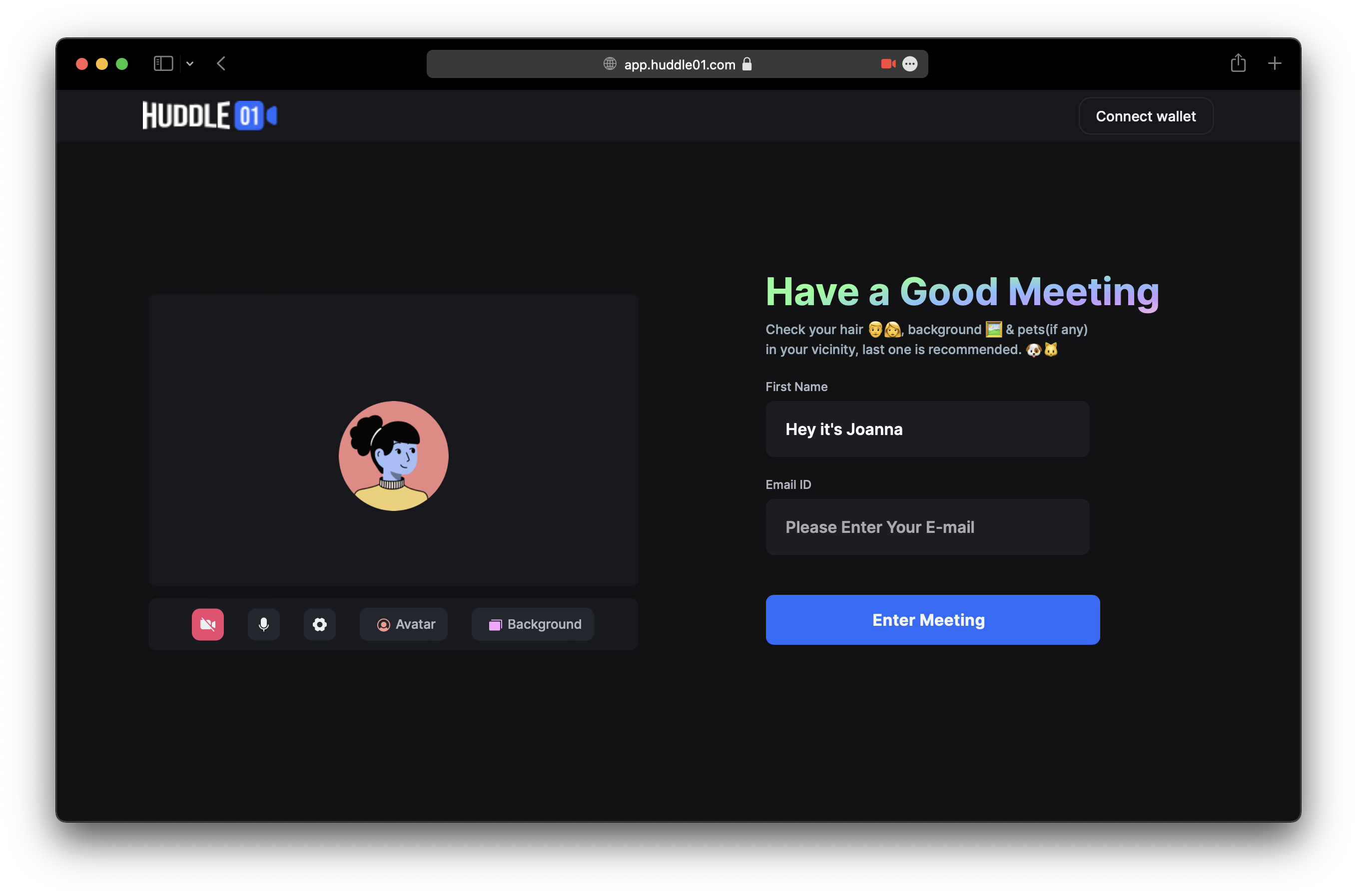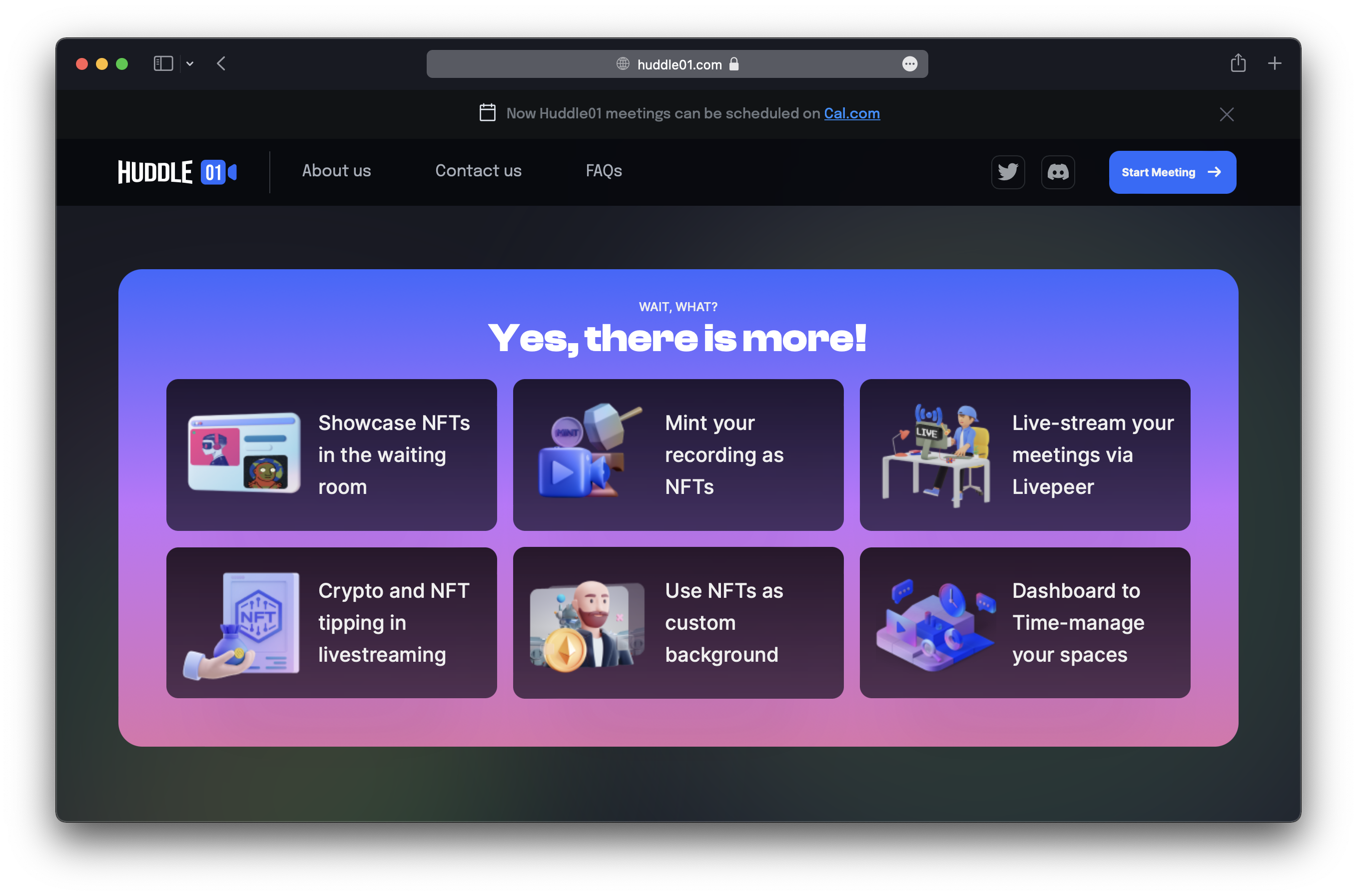How Huddle01 built the world’s first Web3 meeting app
The Web3 industry has experienced exponential growth over the last year, and it's no surprise to see why. With web 2.0 companies like Facebook and Google being under the spotlight for issues regarding their user's privacy and monopolistic attitudes for years, people don't trust them as much as they did before.
Web3 (also known as the "web 3.0") represents a fertile ground for new companies to disrupt established industries and regain the consumers' lost trust in software. Until recently, such disruption was hard to achieve due to the lack of robust protocols on which to build new products, but with the launch of layer two protocols such as Polygon ($MATIC) and Arbitrum, that's no longer the case.
The emotionally charged discussions crypto enthusiasts had over what the Web3 world should look like happened over web 2.0 solutions like Zoom and Skype. That's when two experienced entrepreneurs like Susmit Lavania and Ayush Ranjan decided to create Huddle01, a Web3 video meetings platform that leverages decentralized, blockchain infrastructure. This is how it happened.
Trailblazers in Web3
Huddle01 started during the ETH Global Hacker Fest 2020, an Ethereum hackathon run by Protocol Labs and The Ethereum Foundation. To deliver on their idea, Lavania and Ranjan created a P2P call around WebRTC, using Filecoin as recording storage. It blew up.
People loved the project, which allowed the founders to raise capital and hire a team. What makes a Web3-native company like Huddle01 special is that people can use their Web3 identity and completely own their data.
Huddle01 doesn’t require people to create or register accounts — an already antiquated concept — so the company cannot track or advertise to them. It also means that no government or law enforcement institution could ever access the people who use Huddle01’s data.

Soon, Huddle01 expects to work directly with its partners — the miners who store and handle their data — to create new features, set pricing, and more. A win-win for everyone involved.
Empowering Web3 through video
Huddle01 is feature-rich and can compete with any online meeting tool while giving it a modern, Web3 twist. Some of the features Huddle01 has to offer:
- Login with your Web3 wallet — no email address or phone needed
- Use NFTs as your digital identity
- Meeting recordings over decentralized IPFS — a p2p hypermedia protocol
- Token-gated meetings through NFTs and ERC-20 tokens
- Decentralized live streaming through Livepeer’s Streaming Service
Huddle01 allows Web3 enthusiasts such as NFT Communities, DAOs, and Web3 creators to stream their content through live streaming. Participants can reward creators by sending them NFTs and crypto tipping during the livestreaming sessions, both of which are gasless. Removing gas fees reduced any friction people could have had to fund their favorite creators.
Creators can also mint the stream as an NFT and send it to participants as soon as the stream is over.

Huddle01’s goal is to create a transparent and supportive environment where creators and fans can engage seamlessly over video from anywhere in the world.
Leveraging Livepeer's decentralized network
Despite all of the growth, a critical piece of feedback they receive early on is that some of the people who use Huddle01 had large communities that couldn’t be serviced through the real-time communication protocol they used. They needed some sort of relayed transmission that allowed these communities to use video streaming. That’s when they found Livepeer.
Thanks to Livepeer’s Ethereum-based live streaming network, Huddle01 communicates over video in real-time with a latency of under 200 microseconds. Gone are the days when people had to repeat their messages multiple times, reset their calls, and experience pixelated video streams.
Livepeer solves all that jazz by leveraging a large network of crypto miners who rent their unused GPUs in exchange for a token. The entire transcoding process happens quickly and safely at a much lower cost than most traditional solutions like AWS and Azure. With a versatile number of codecs, resolutions and FPS supported, and video players, Livepeer was the most logical partner for Huddle01.
The best part is that Livepeer Video Services, a developer-friendly platform that leverages the decentralized transcoding network, makes setup easy, quick, and with minimal maintenance. Creating a live stream, connecting it to an encoding software like OBS, and recording it for playback all come built-in in Livepeer Video Service’s tooling.
If you run a Web3 business and you are wondering how you can implement Livepeer Video Service's live streaming solution, check out the following guides: